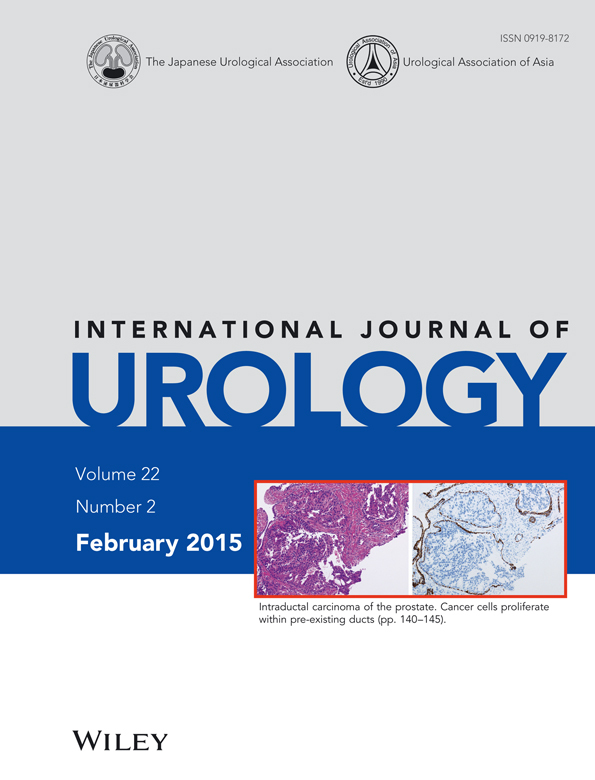Postoperative detrusor contractility temporarily decreases in patients undergoing pelvic organ prolapse surgery
Abstract
Objectives
To assess the postoperative lower urinary tract function in patients undergoing pelvic organ prolapse surgery.
Methods
A total of 24 women with advanced anterior vaginal wall prolapse underwent transvaginal repair using a polypropylene mesh. The preoperative, 1-week and 3-month postoperative evaluations were carried out by urodynamics. Maximal flow rate detrusor pressure at maximal flow rate, voided volume and bladder contractility index were measured. A value of P < 0.05 was considered to be statistically significant.
Results
The mean age of patients was 73.5 years (range 49–84 years). The mean postoperative maximal flow rate, voiding efficiency and bladder contractility index decreased significantly after the operation compared with the preoperative values (P < 0.05). No significant differences were observed between preoperative and 3-month postoperative parameters. Of the patients, 33.3%, 11.1% and 50% were classified as having normal/strong contractility preoperative, 1 week and 3 months, respectively. The proportion of normal/strong contractility decreased significantly after the operation, and it recovered 3 months postoperatively. The grade of obstruction did not change significantly.
Conclusions
Patients undergoing pelvic organ prolapse surgery present temporary impaired detrusor contractility, which improves significantly during the midterm postoperative period.




